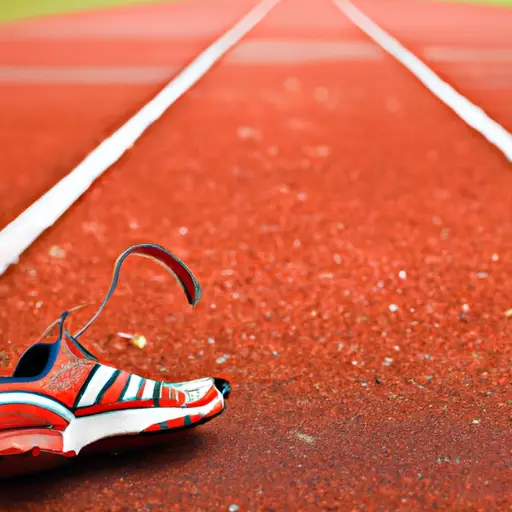Professional athletes with a fear of flying face unique challenges in their careers. The anxiety associated with flying has impacted athletes and coaches across various sports, including baseball, basketball, hockey, football, golf, and tennis. Well-known athletes like Joc Pederson, Seth Brown, Dennis Bergkamp, and Royce White have all grappled with the fear of flying. However, the landscape has changed, and now mental health professionals and support staff are readily available to assist athletes in managing their flight anxiety. Through techniques like meditation, visualization, and relaxation breathing, athletes are now better equipped to handle their fears. Moreover, increased awareness and resources for mental health underline the importance of addressing athletes’ fears, reducing stigma, and promoting overall psychological well-being. With improved tools and strategies, support for athletes with a fear of flying has significantly improved compared to previous years.

This image is property of images.unsplash.com.
Understanding the Fear of Flying in Professional Athletes
Aviophobia, commonly known as the fear of flying, is a phenomenon that affects numerous individuals across different professions. Professional athletes, despite their physical prowess and mental toughness, are not exempt from this fear. In fact, anxiety related to flying has had a significant impact on the careers of athletes and coaches in various sports.
Regular flying is an unavoidable part of the lives of professional athletes, regardless of the sport they participate in. From baseball to basketball, hockey to football, golf to tennis, athletes often find themselves traveling long distances to compete in tournaments or games. However, for those suffering from aviophobia, the thought of boarding a plane can be overwhelming and anxiety-inducing.
The Prevalence of Aviophobia in Athletes
The fear of flying is more common among professional athletes than one might think. Just like individuals in other professions, athletes experience different levels of anxiety when faced with the prospect of flying. However, due to the demanding nature of their careers, athletes may be more prone to experiencing flight anxiety.
Individual sports and team sports may have differing impacts on athletes with aviophobia. Athletes in individual sports, such as golf or tennis, often deal with the pressures of performing alone. The fear of flying in these situations can be isolating and may lead to increased performance anxiety. On the other hand, athletes participating in team sports may find some solace in the support and camaraderie of their teammates during flights.
The impact of the fear of flying on athletic performance is evident in various cases. Athletes like Joc Pederson, Seth Brown, Dennis Bergkamp, and Royce White have publicly shared their struggles with aviophobia and how it has affected their performance. These athletes serve as examples of how flight anxiety can have tangible consequences on the field, court, or course.
Professional Athletes Known for Struggling with Aviation Phobia
Joc Pederson, a professional baseball player, has been open about his fear of flying. Despite this fear, Pederson has not allowed it to hinder his success on the field. Recognizing the importance of managing his aviophobia, he has worked with mental health professionals and developed coping mechanisms to help him overcome his fear.
Seth Brown, a promising young baseball player, has also spoken about his fear of flying. Brown’s career has seen its fair share of challenges due to his flight anxiety, but with the help of his support team and coping strategies, he continues to persevere and perform at a high level.
In the world of soccer, Dennis Bergkamp, a legendary Dutch player, faced significant challenges with his fear of flying throughout his career. Despite the hurdles he encountered, Bergkamp managed to excel on the field and carve out a remarkable legacy. His story serves as an inspiration to other athletes battling aviophobia.
Royce White, a former professional basketball player, gained widespread attention for his candid discussions about his fear of flying. White’s fear and the resulting difficulties it caused impacted his career in the NBA. However, his openness about his mental health struggles has paved the way for conversations about aviophobia in the world of sports.
Root Causes of Fear of Flying in Athletes
Several factors contribute to the fear of flying in athletes. One such factor is fatigue. The demanding nature of professional sports often results in athletes experiencing exhaustion. This fatigue can exacerbate flight anxiety and make the experience much more overwhelming.
Traumatic in-flight experiences can also contribute to the development of aviophobia. Athletes, like anyone else, may have been through distressing incidents during flights, such as severe turbulence or emergency landings. These events can leave a lasting impact on their psyche, leading to a fear of flying.
Another significant contributing factor is generalized anxiety disorder. Athletes, like the general population, can develop this disorder, which can manifest as a fear of flying. Understanding the role of anxiety disorders in developing aviophobia is crucial in providing appropriate support and resources to athletes struggling with this fear.

This image is property of images.unsplash.com.
How Fear of Flying Affects the Personal Lives of Athletes
Beyond impacting their professional careers, fear of flying can also have significant effects on the personal lives of athletes. Balancing personal obligations with the demands of their sports careers is already a challenge. Add the fear of flying into the equation, and athletes may experience heightened stress and anxiety.
Frequent travel is a requirement for professional athletes, and this can place strain on their personal lives. Being away from family and loved ones for extended periods can create stressors within relationships. Athletes with flight anxiety may find it particularly challenging to maintain a healthy work-life balance due to the added anxieties associated with travel.
Fear of flying can also impact the mental well-being of athletes’ family members. Seeing a loved one struggle with anxiety and fear can be distressing, and it may require additional support for both the athlete and their family to manage and navigate these challenges.
Coping Mechanisms: Managing Flight Anxiety
Recognizing the impact of aviophobia on athletes, mental health professionals play a crucial role in helping athletes manage flight anxiety. Through therapy, athletes can develop coping mechanisms and mental tools to navigate their fear and anxiety, allowing them to travel more comfortably.
Athletes adopt various techniques to combat their fear of flying. Meditation, visualization, and relaxation breathing are effective strategies employed by athletes to manage flight anxiety. These techniques provide athletes with a sense of calm and control, empowering them to alleviate their fears and focus on their upcoming competitions or games.
Role of Sports Management in Supporting Athletes with Fear of Flying
Sports organizations have a duty to prioritize the mental health of their athletes. Recognizing the prevalence of aviophobia and its impact on performance, sports management should ensure that resources and support are available to athletes struggling with flight anxiety.
Several programs have been implemented to assist athletes with aviophobia. These programs often involve mental health professionals who specialize in anxiety disorders and provide personalized support to athletes. By creating safe spaces for athletes to discuss and manage their fears, sports organizations can play a vital role in supporting their athletes’ mental well-being.
For athletes who are unable to overcome their fear of flying, exploring alternative travel options is essential. Sports management should aim to provide athletes with feasible alternatives that reduce the necessity of flying, allowing them to continue pursuing their careers without compromising their mental health.
Shifting Attitudes: The Reduction of Stigma Around Fear of Flying
In recent years, there has been a significant shift in attitudes towards mental health in sports. Mental health advocacy has gained momentum, with athletes playing a crucial role in reducing the stigma surrounding fear of flying and other anxiety disorders.
Athletes speaking openly about their mental health issues and experiences with fear of flying have paved the way for more discussions centered around psychological well-being in the sports world. By sharing their stories, these athletes have created a supportive environment that encourages others to seek help and address their own fears.
Addressing the fear of flying in the athletic community has not only benefited individual athletes but also has had a societal impact. These discussions have increased awareness of the challenges athletes face and have emphasized the importance of providing support and resources to foster their mental well-being.

Tools and Strategies to Reduce Stress and Anxiety During Flights
Athletes often employ various tools and strategies to reduce stress and anxiety during flights. Comfort devices, such as travel pillows, blankets, and noise-canceling headphones, can provide a sense of familiarity and relaxation. These items can assist athletes in creating a more comfortable environment while flying and help alleviate their anxiety.
In addition to comfort devices, athletes may adopt strategies to prepare themselves mentally and emotionally for flights. Pre-flight rituals, such as listening to calming music or engaging in positive self-talk, can help athletes shift their focus away from their fear and toward a more positive mindset.
Creating a comfortable environment during flights can also involve engaging in activities that bring joy and relaxation. Reading, watching movies or TV shows, or listening to podcasts or audiobooks can serve as distractions and help athletes pass the time while maintaining a calm state of mind.
The Evolution of Resources and Support for Athletes with a Fear of Flying
Over the years, there has been a significant improvement in the resources and support available to athletes with a fear of flying. Recognizing the prevalence of aviophobia and its impact on athletes’ careers, there has been an increased focus on providing appropriate support and intervention.
Compared to previous years, athletes now have access to a wider range of resources. Mental health professionals specializing in anxiety disorders are available to athletes, offering therapy, counseling, and personalized strategies to manage flight anxiety effectively. These resources aim to equip athletes with the tools and support they need to navigate their fear of flying and continue excelling in their respective sports.
Looking to the future, innovations aimed at supporting athletes with aviophobia are likely to emerge. Technology, such as virtual reality therapy or immersive relaxation programs, may offer athletes new avenues for addressing and managing their fear of flying. These advancements hold the potential of further enhancing the mental well-being and career sustainability of athletes struggling with aviophobia.

The Impact of these Resources on Athletes’ Careers
The availability of resources and support for athletes with a fear of flying has had a profound impact on their careers. By addressing their anxieties and developing effective coping mechanisms, athletes can approach flights with greater confidence and focus. This newfound resilience translates into improved performance on the field, court, or course.
Additionally, the mental well-being of athletes directly affects their overall quality of life. By acknowledging the fear of flying and seeking the necessary support and resources, athletes can maintain a healthy work-life balance, resulting in enhanced personal fulfillment and happiness.
In conclusion, the fear of flying in professional athletes is a significant challenge that can impact both their careers and personal lives. However, increased awareness and resources for mental health have made it easier for athletes to address their fears. Through the support of mental health professionals, the adoption of coping mechanisms, and the commitment of sports management, athletes can manage their flight anxiety and continue thriving in their chosen sports. As athletes bravely speak up about their mental health issues, the reduction of stigma around fear of flying grows, promoting psychological well-being and creating a more supportive environment for all athletes. With the evolution of resources and support, athletes can navigate their fear of flying, reduce stress and anxiety during flights, and ultimately, reach their full potential in their careers.


